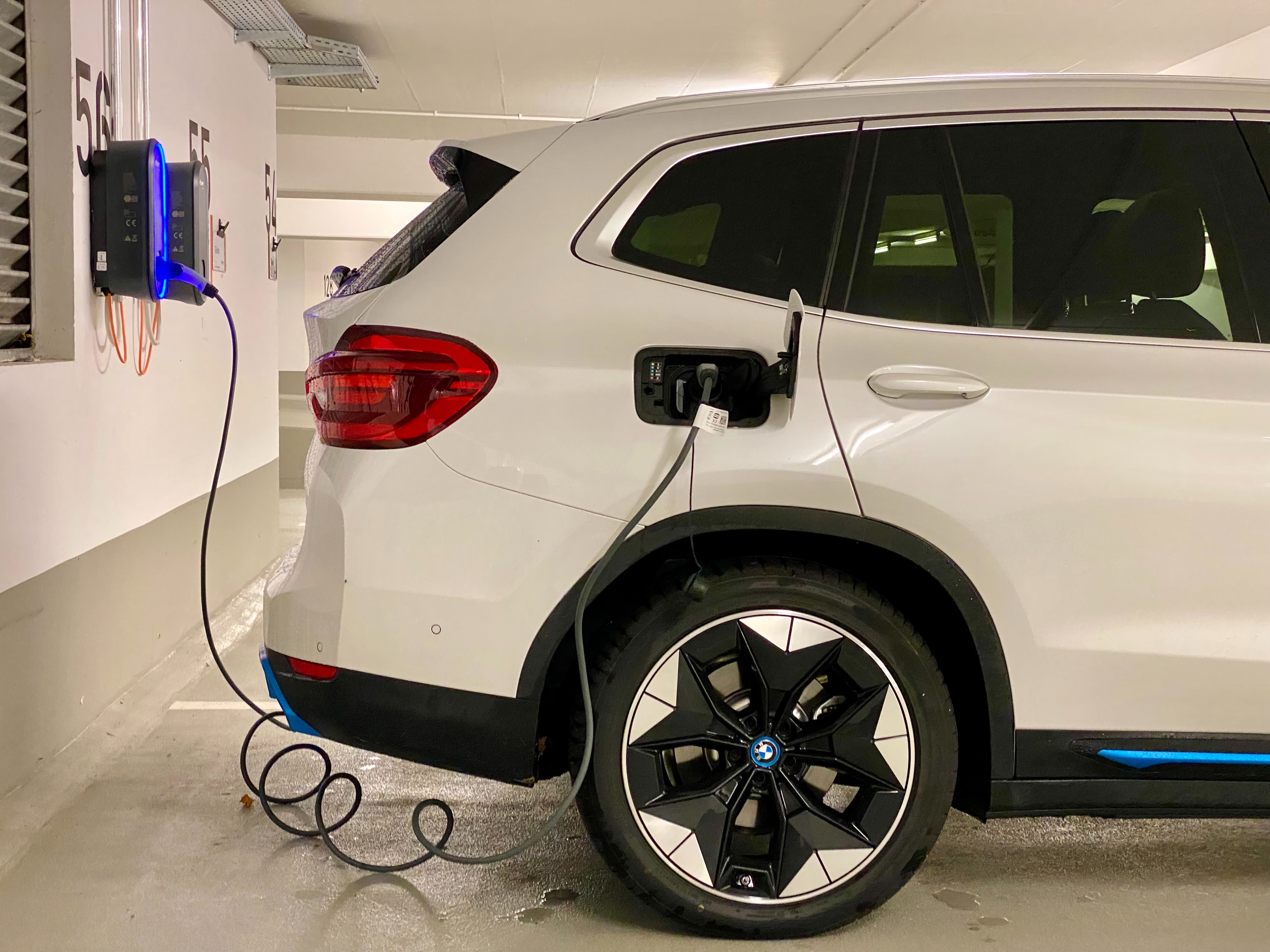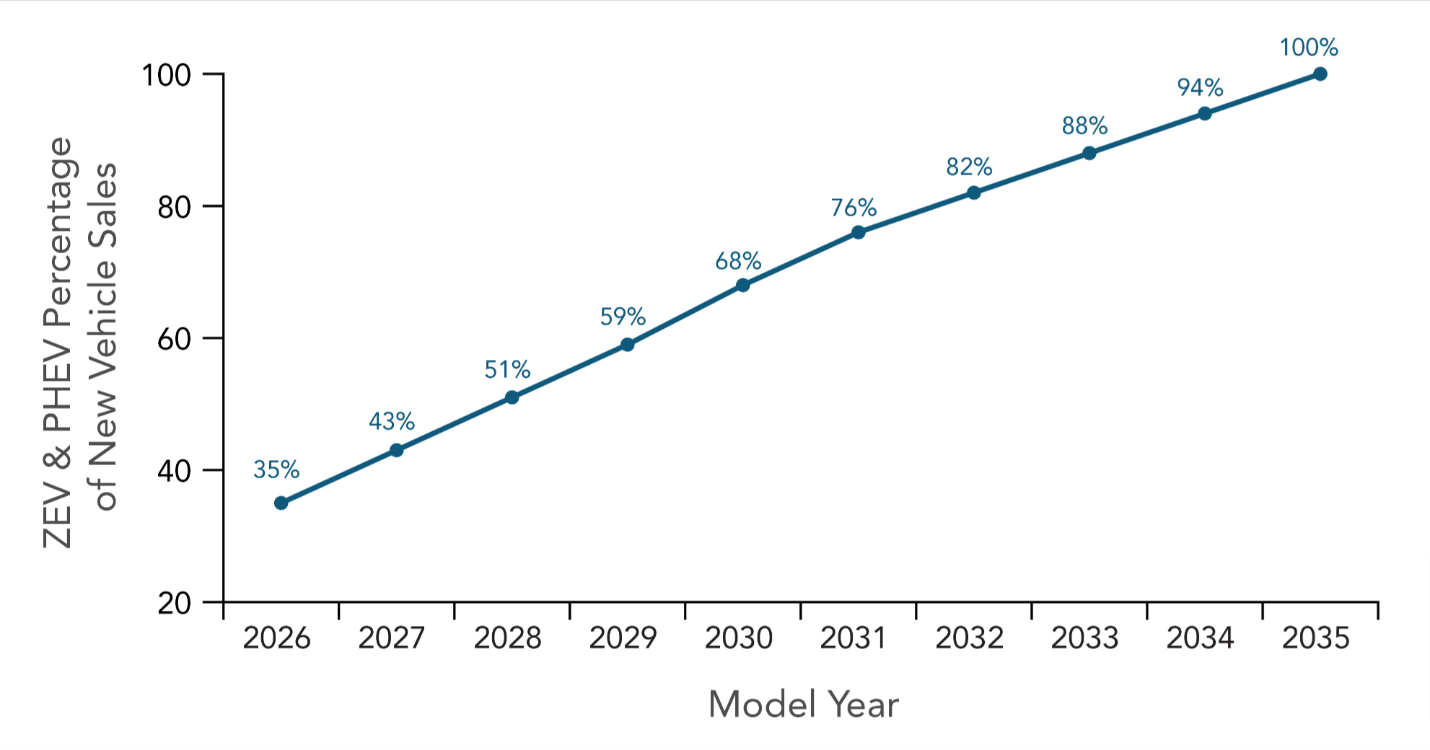 In 2007, the Maryland General Assembly passed a bill nicknamed California Cars, requiring that the state adopt California’s emissions standards for cars and light duty trucks.
In 2007, the Maryland General Assembly passed a bill nicknamed California Cars, requiring that the state adopt California’s emissions standards for cars and light duty trucks.
In August of this year, California announced its intention to set new car sales quotas for zero-emissions vehicles beginning in 2026 and phase out gasoline- and diesel-powered new cars by 2035. Maryland and 17 other states that follow the California standard will adopt the same requirements by regulation, most by the end of 2022.
The chart below from the California Air Emissions Board shows the ramp-up of zero emissions sales quotas beginning in 2026 with 35% of new vehicle sales, rising to 68% of sales in 2030 and reaching 100% of car sales by 2035.
As of July of 2022, there were just under 53,000 electric and battery hybrid electric vehicles registered in Maryland. Based on the annual number of new car sales in Maryland and the California Cars sales quotas, the number of electric vehicles in the state would more than double in 2026 and pass 500,000 cars by 2030.
Modeling results from a California Energy Commission staff report, which analyzed charging needs created by the accelerated adoption of electric vehicles, estimated a ratio of about seven electric vehicles for one public charger. A similar ratio of vehicles to charging stations would require a network of 70,000 public chargers be installed in Maryland by 2030. Maryland’s geography, travel patterns and charging behavior could lead to different requirements than California. A 2018 gap analysis of Maryland charging needs by the U.S. Department of Energy’s Renewable Energy Laboratory resulted in a higher number of cars per charging plug, suggesting the need for 45,000 public charging plugs to support 500,000 electric cars.
The California Energy Commission report also projects a significant new load onto the California electric grid with typical weekday peak demand increasing by 25%. Even after accounting for commercial charging during daytime hours, more than 60% of total charging energy demand is expected to occur at night when solar generation is not available.
Although the 2007 law does not require that Maryland adopt sales quotas for tractor trailers and other heavy-duty vehicles, California is taking that step and dozens of climate and transportation non-profits are urging Governor Hogan and the General Assembly to follow suit. The power requirements for electric car recharging are equivalent to about half the load of a typical house. Recharging trucks and other heavy-duty vehicles requires about 22 times the power of a typical house.
Regardless of the exact number, Maryland’s public charging network is a fraction of the size needed to support the electric vehicle fleet that may result from California Cars. Improvements to electric distribution and supply will be necessary for certain locations. The Maryland Public Service Commission is running a pilot program to evaluate how public utilities might build out much of the charging network as well as how to understand and adapt to the energy demands of electric vehicle owners. Maryland and the other states recently provided plans to the federal government on how they would deploy $5 billion in National Electric Vehicle Infrastructure Formula Program funds. The draft 2024 International Energy Conservation Code includes minimum requirements for electric vehicle infrastructure installation, on-site power generation and energy storage that varies by building use. NAIOP members who have not already done so should be preparing for an all-of-the-above approach.
